The extraordinary Taj Mahal in Agra, India, built by an emperor as a mausoleum for his deceased wife, is a famous symbol of love and devotion. Tremendous wealth was required to construct this monument. Where did the riches originate? It troubled me to learn of the direct connection to precious metals from the New World – and particularly, to silver from the Potosí mine high in the Andes Mountains. Once a part of the Inca Empire, Cerro Rico de Potosí (Rich Mountain in Spanish) provided more than half of the world’s silver supply between the 16th and 18th centuries.
The fabulous metallic riches that Europeans procured in the Americas and shipped to the other side of the world enabled a new era of wealth – and the construction of the Taj Mahal.
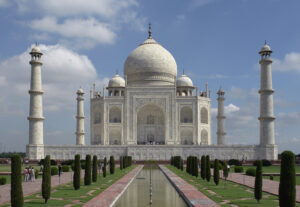
The Taj Mahal in Agra, India (Yann, 2011, Wikimedia)
The Monumental Taj Mahal
Shah Jahan (1592-1666), the fifth emperor of the Mughal Empire, is considered one of the richest men ever to live. The Mughal Empire lasted from 526 to 1857, and at its peak covered a vast territory that included most of modern India, Pakistan, Nepal, and into Afghanistan. Mughal emperors were descendants of Genghis Khan and Timur, founders and rulers of enormous empires that once spread across modern China and Central Asia.
Shah Jahan and his beloved wife, Mumtaz Mahal, became engaged when he was 15 and she was 14. They were wed five years later in 1612, on a date that was considered auspicious by the royal court astrologers. Mumtaz was a trusted confidant and a companion of Shah Jahan during his frequent military campaigns. In their 19 years of marriage, they had 14 children (seven died at a young age). After giving birth to her 14th child, Mumtaz Mahal died from postpartum hemorrhage. She was buried at a temporary location while Shah Jahan began planning the design and construction of a mausoleum and funerary gardens suitable for honoring her. These became the monument known as the Taj Mahal.
Commissioned by Shah Jahan in 1631, the 42-acre (17 hectare) complex includes a mosque, a guest house, an enormous entrance gate, four minaret towers, and Mumtaz Mahal’s magnificent mausoleum. All are surrounded by gardens and water fountains. The exterior of the mausoleum is sheathed in stunning translucent white marble and vast amounts of gold. The interior incorporates inlays of precious and semi-precious stones placed into white marble. The outer buildings and gate have exteriors of red sandstone. Enamel work of the highest quality was added throughout the buildings.
Materials for the construction of the Taj Mahal were sourced from all over India and Asia. An estimated 20,000 people worked on the construction for more than a decade. Elephants and oxen hauled tons of marble from quarries over 200 miles (322 km) distant. Wagonloads of gemstones — jade, turquoise, lapis lazuli, sapphire, carnelian, and others (28 types in all) – arrived at the site from various parts of India, Asia, and Europe.
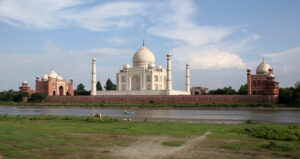
The Taj Mahal complex (D. Castor, 2008, Wikimedia)
During Shah Jahan’s lifetime, the world was transforming. Early in the 16th century, Spanish and Portuguese voyagers had discovered and subjugated Indigenous Americans. The fantastically rich gold and silver ores (mined with accessible sources of inexpensive labor power) that the colonists acquired in the New World were shipped off to Europe and beyond. The economies of numerous countries changed, as well as the tastes of the elites. Dramatic increases in demand for luxury trade items resulted. Many considered India to be a synonym for exotic wealth in gems and spices. There was also a significant demand for Mughal products of cotton and silk textiles, peppers, indigo, and others. Payments were made in large quantities of gold and silver.
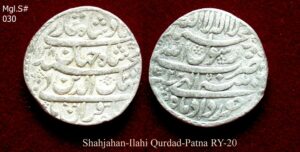
Silver rupee coins of Shah Jahan (Wikipedia)
The Taj Mahal is on several lists of the “Wonders of the World”, including the “New 7 Wonders of the World” announced in 2007. The site achieved recognition as a UNESCO World Heritage Site in 1983. A description states: “Taj Mahal represents the finest architectural and artistic achievement through perfect harmony and excellent craftsmanship…. It is a masterpiece of architectural style in conception, treatment and execution and has unique aesthetic qualities in balance, symmetry and harmonious blending of various elements.” (https://whc.unesco.org/en/list/252/ )
Cerro Rico de Potosí: Rich Mountain of Silver – and of Death
After Spanish conquistadores arrived in the lands of the Incas in 1532, they lost no time in looting the fabulous wealth of Andean gold and silver. Exquisite jewelry, gold and silver plates, and art objects were melted down in furnaces that reportedly burned for months. Ingots of Inca gold and silver were loaded onto Spanish ships and carried in shipment after shipment to Europe. When the new arrivals had collected all the precious metals they could plunder in ready-to-melt form, they turned their attention to finding the sources of these metallic ores.
In 1545 the Potosí mine, now in Bolivia, was opened to recover enormous deposits of silver-rich ore. One of the most notorious of Spanish mines, the name “Potosí” became inexorably linked with forced labor and death. Mercury was essential for silver production at Potosí. Spanish mine operators initially shipped this material from Europe, especially the Almadén region of Spain. In the mid-1560s, the Spanish colonists recognized and directed the mining of the rich deposits of mercury-bearing ore near Huancavelica, now in Peru and some 800 miles (1,287 km) to the northeast of Potosí.
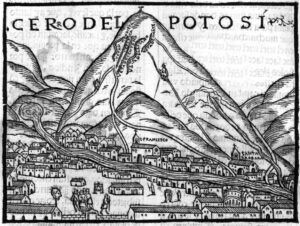
Drawing of Potosi in the first image shown in Europe by Cieza de León, 1553 (Wikipedia)
For laborers in both Potosí and Huancavelica mines, the “standard occupational hazards” included respiratory diseases, falls from precarious rope ladders, and burial from rock falls and collapses. Some workers were forced to stay underground for days at a time, and accidents and disease resulted in the deaths of large numbers of workers. Severe environmental degradation from timber harvesting, livestock overgrazing, and mercury contamination became part of the enterprise.
The hazards were intensified for the mine workers exposed to the toxic effects of mercury poisoning, recognized at least as early as Inca times and certainly by the colonial powers. Many workers were forced to mix mercury and silver ore with their bare feet, and many more became engulfed in mercury-laden dust that they carried into their homes, contaminating wives and children.
Estimates of the production from Cerro Rico de Potosí vary, but it is widely considered to be the richest sources of silver ever discovered. Over the decades, however, silver production diminished. Mine operators reached peak extraction levels at Potosí in 1592. By about the year 1800, miners had depleted the silver content of the ores sufficiently so that tin became the principal commercial mineral extracted from the mines.
Legacy
Over centuries, the construction of the Taj Mahal as a symbol of Shah Jahan’s devotion to his dead wife has assumed mythic proportions. The actual story will probably never be known. During Shah Jahan’s reign, he commissioned a series of fabulous architectural projects and built a new capital city. He reportedly was obsessed with absolute power and the emblems of power.
European expansion into the New World dramatically changed the trajectory of history. The suffering of Indigenous Americans – and the wealth of the Incas and their ancestors — empowered the construction of lavish monuments such as the Taj Mahal. And today, the cities of Huancavelica, Peru and Potosí, Bolivia continue to grapple with the dismal legacy of untold tons of toxic mercury released into the environment.
If you liked this post, please share it and/or leave a comment or question below and I will reply – thanks! And if you’d like to receive a message when I publish a new post, scroll down to the bottom of this page, and leave your email address on my website. Join now to learn more about geology, geography, culture, and history.
SOURCES
Bakewell, P.J., 1984, Miners of the Red Mountain: Indian Labor in Potosí, 1545-1650. University of New Mexico Press.
Bakewell, P. J. and J. Holler, 2009, A history of Latin America to 1825, Vol. 8. John Wiley & Sons.
Begley, W.E., 1979, The myth of the Taj Mahal and a new theory of its symbolic meaning. The Art Bulletin, 61(1), pp.7-37.
Findlay, R., 2018, Asia and the world economy in historical perspective, Asian Transformations – An Inquiry into the Development of Nations, edited by D. Nyyar for the United Nations University Institute for Development Economics Research, Oxford University Press, p. 88-91.
Frankopan, P., 2017, The Road of Silver, The Silk Roads: A New History of the World. Vintage, p. 219-241.
Moore, J. W., 2010, This lofty mountain of silver could conquer the whole world: Potosí and the political ecology of underdevelopment, 1545-1800. Journal of Philosophical Economics 4, no. 1, 58-103.
Preston, D., 2009. Taj Mahal: Passion and Genius at the Heart of the Moghul Empire. Bloomsbury Publishing. USA.
Robins, N.A., 2011, Mercury, mining, and empire: the human and ecological cost of colonial silver mining in the Andes, Indiana University Press.
Feature Photo of the Taj Mahal surrounded by mist, by Kristian Bertel, 2008. https://commons.wikimedia.org/wiki/File:Taj_Mahal_in_India_-_Kristian_Bertel.jpg
Photo of the Taj Mahal in Agra, India, by Yann, 2011. https://commons.wikimedia.org/wiki/File:Taj_Mahal,_Agra,_India_edit3.jpg
Photo of Taj Mahal complex, by David Castor, 2008. https://commons.wikimedia.org/wiki/File:Taj_Mahal-08.jpg
Photo of silver rupee coins of Shah Jahan, by Drnsreedhar1959. https://en.wikipedia.org/wiki/Shah_Jahan#/media/File:Silver_rupee_coin_of_Shah_Jahan,_from_Patna_mint.jpg
Drawing of Potosi in the first image shown in Europe by Cieza de León, 1553. https://en.wikipedia.org/wiki/Potos%C3%AD#/media/File:Capitulo-CIX.jpg
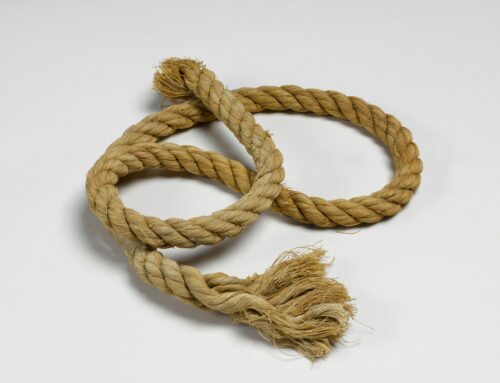
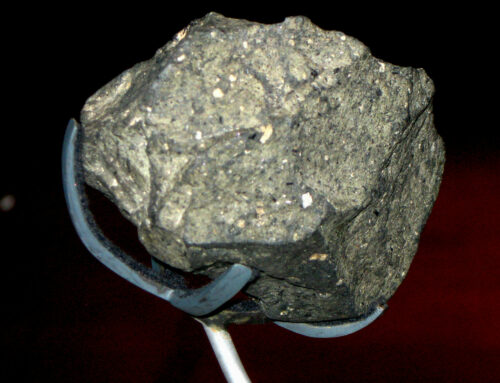
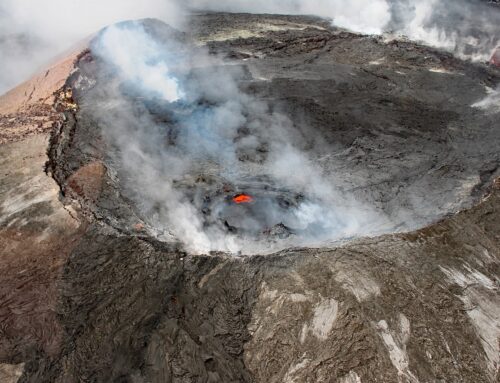
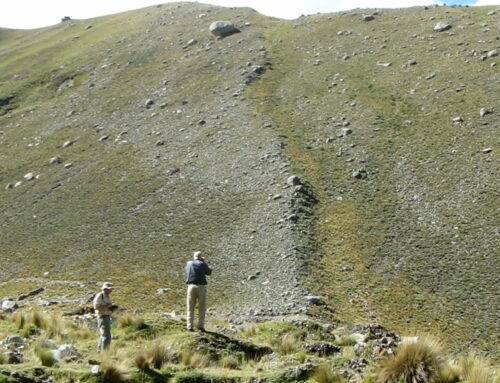
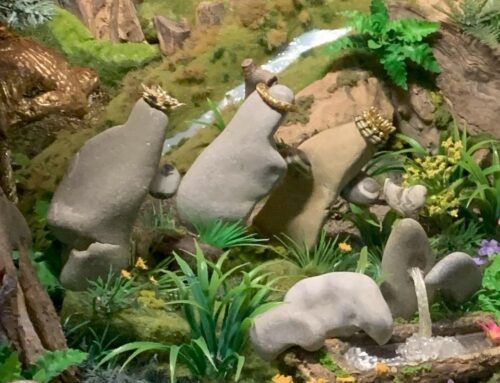
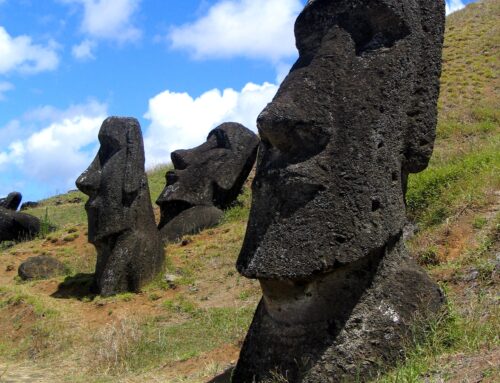
Bone-chilling and horrifying information, even if not surprising. Thank you!
Yes – thanks for the comment, Diana.
Thanks (I think) for the enlightenment, Roseanne. It seems as we peel back the onion of history, it just gets uglier and uglier.
Thanks, Steve. True – but also, the connections are fascinating.
Not denying any colonial atrocities, but where is the evidence supporting the claim that Potosi silver was a substantial source of Shah Jahan wealth to grant such heading?
Good question, and in my list of Sources: Frankopan, P., 2017, The Road of Silver, The Silk Roads: A New History of the World. Vintage, p. 219-241. The information in Peter Frankopan’s book is consistent with other sources I have read about the flow of Potosi wealth to the other side of the world. Thanks for the comment.